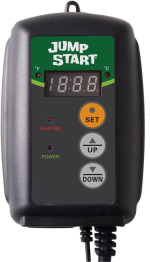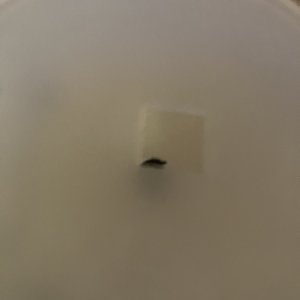You are using an out of date browser. It may not display this or other websites correctly.
You should upgrade or use an alternative browser.
You should upgrade or use an alternative browser.
Bread Thread
- Thread starter Gary Knowels
- Start date
Beat me to it - a friend of mine is into fermenting soy beans (natto), he's able to keep the fermentation process temperature dialed in very closely with these two items kept in his oven:You could probably make a really simple proofing chamber if you have something like this laying around.
View attachment 97122
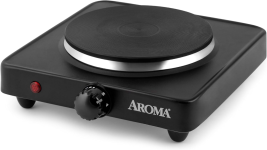
and
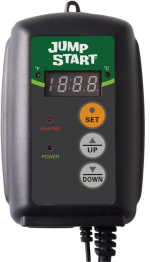
Attachments
Interesting idea. I have a few but never thought about it. As is, for my regular loaves, I kinda love the slow proof. I mix at like 8am and finish it up by 4ish. Because it’s so slow you have a lot more leeway in terms of over proofing compared to the summer.You could probably make a really simple proofing chamber if you have something like this laying around.
View attachment 97122
And I can’t say this for certain, but I do think my bread is better in the winter with the slower ferment.
I feel the same for a country loaf, but some recipes just need the heat!Interesting idea. I have a few but never thought about it. As is, for my regular loaves, I kinda love the slow proof. I mix at like 8am and finish it up by 4ish. Because it’s so slow you have a lot more leeway in terms of over proofing compared to the summer.
And I can’t say this for certain, but I do think my bread is better in the winter with the slower ferment.
Wayne Kohan
Life of the Party
Since we‘re talking bulk fermentation here, can someone help me out a little. I’ve made three loaves of sourdough so far, going to throw together a loaf tomorrow. So when is the the bulk fermentation done? I’ve watched tons of YouTube videos and I seem to get all sorts of answers. Some say 4 hours, some say 12 hours, some say it should double in size, others say 20-30% increase in size, others say the increase doesn’t matter but the dough needs to be smooth and jiggly and alive and happy. I know it has a lot to do with temperature and how active your starter is. So what do you all look for in the fermentation process to know it’s done?
flybill
Life of the Party
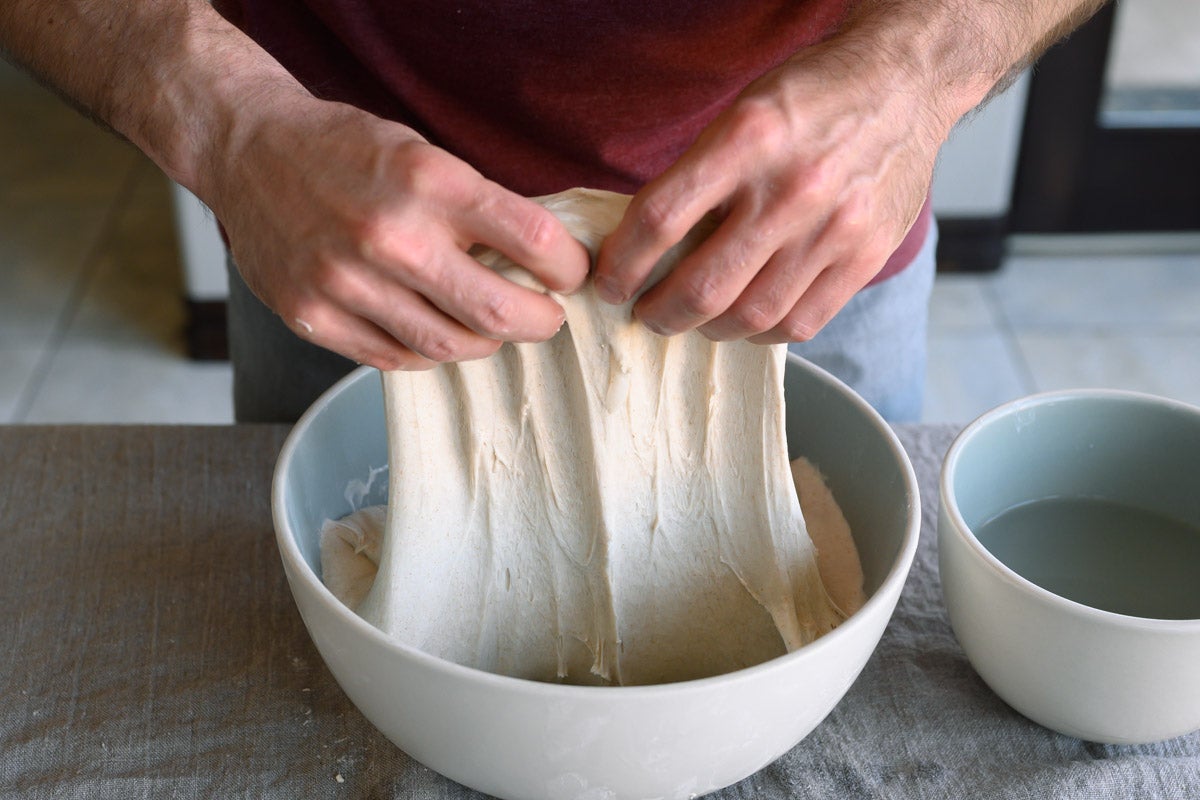
Bulk fermentation, explained
Bulk fermentation (also called the first rise or primary fermentation) is one of the most important steps of yeast bread baking. It begins right when mixing ends and lasts until the dough is divided and preshaped. The name signifies exactly what it is: the step when the dough is fermenting in a...
Zak
Legend
I use see through plastic tubs and I look at the bubbles through the tub wall. When the dough is riddled with bubbles I can it good. That usually means about double volume. If I am fermenting in the fridge, it could stay in there a week and be fine.Since we‘re talking bulk fermentation here, can someone help me out a little. I’ve made three loaves of sourdough so far, going to throw together a loaf tomorrow. So when is the the bulk fermentation done? I’ve watched tons of YouTube videos and I seem to get all sorts of answers. Some say 4 hours, some say 12 hours, some say it should double in size, others say 20-30% increase in size, others say the increase doesn’t matter but the dough needs to be smooth and jiggly and alive and happy. I know it has a lot to do with temperature and how active your starter is. So what do you all look for in the fermentation process to know it’s done?
Woof, what a simple question with a Complicated answer.Since we‘re talking bulk fermentation here, can someone help me out a little. I’ve made three loaves of sourdough so far, going to throw together a loaf tomorrow. So when is the the bulk fermentation done? I’ve watched tons of YouTube videos and I seem to get all sorts of answers. Some say 4 hours, some say 12 hours, some say it should double in size, others say 20-30% increase in size, others say the increase doesn’t matter but the dough needs to be smooth and jiggly and alive and happy. I know it has a lot to do with temperature and how active your starter is. So what do you all look for in the fermentation process to know it’s done?
I consider the preshape to be the end of bulk ferment so I'll speak with that in mind.
People go about the determination in many ways as you allude to. I mostly go by volume and consistency on a standard batch of 2 batards. It took 40ish loaves to be able to eyeball it in that way. When I don't want to pay as much attention or when I'm deviating from my standard dough, I place the dough in a cambro after stretch and folds (4 sets, 30 minutes apart) and end bulk when the dough volume increases by 1/3. The cambro has approx volume measurements so it's pretty easy.
I've used the aliquot method to great success and it's what I would recommend to myself when I first started baking sourdough if I could. Get a small, straight sided contained (8 oz jam jar for me). After mixing in your starter, take a small amount of dough out of the mix and place in the jam jar. You'll want the aliquot to be 1/4-1/3 of the volume of the jar to begin with. Bulk ferment is done when the aliquot has increased in volume to double the original. Make sure they are experiencing the same temperatures or else this won't work.
The aliquot method gives you a really good reference point to adjust proofing. If you feel it's underproofed, go to 110% increase. If you feel it's overproofed, drop it down to a 90% increase.
Wayne Kohan
Life of the Party
Yep, I read and watch a lot from King Arthur and from The Perfect Loaf, and you’ll note by reading this article the answer is you’re done when it’s jiggly and alive.
Bulk fermentation, explained
Bulk fermentation (also called the first rise or primary fermentation) is one of the most important steps of yeast bread baking. It begins right when mixing ends and lasts until the dough is divided and preshaped. The name signifies exactly what it is: the step when the dough is fermenting in a...www.kingarthurbaking.com
Wayne Kohan
Life of the Party
Thank you, this makes sense.I use see through plastic tubs and I look at the bubbles through the tub wall. When the dough is riddled with bubbles I can it good. That usually means about double volume. If I am fermenting in the fridge, it could stay in there a week and be fine.
Wayne Kohan
Life of the Party
Love this, thanks. Quick question, if the aliquot doubles in size, did the large batch of dough double in size too? Or not necessarily? Assuming you kept both in the same environment.Woof, what a simple question with a Complicated answer.
I consider the preshape to be the end of bulk ferment so I'll speak with that in mind.
People go about the determination in many ways as you allude to. I mostly go by volume and consistency on a standard batch of 2 batards. It took 40ish loaves to be able to eyeball it in that way. When I don't want to pay as much attention or when I'm deviating from my standard dough, I place the dough in a cambro after stretch and folds (4 sets, 30 minutes apart) and end bulk when the dough volume increases by 1/3. The cambro has approx volume measurements so it's pretty easy.
I've used the aliquot method to great success and it's what I would recommend to myself when I first started baking sourdough if I could. Get a small, straight sided contained (8 oz jam jar for me). After mixing in your starter, take a small amount of dough out of the mix and place in the jam jar. You'll want the aliquot to be 1/4-1/3 of the volume of the jar to begin with. Bulk ferment is done when the aliquot has increased in volume to double the original. Make sure they are experiencing the same temperatures or else this won't work.
The aliquot method gives you a really good reference point to adjust proofing. If you feel it's underproofed, go to 110% increase. If you feel it's overproofed, drop it down to a 90% increase.
flybill
Life of the Party
Just found out about the Perfect Loaf from Gary, with the foccacia I started today. Will leave it in the fridge overnight and bake tomorrow. Ordered some round pans so I can do two different loaves the next time. Might do sourdough waffles for Sunday morning.. haven't decided for sure.Yep, I read and watch a lot from King Arthur and from The Perfect Loaf, and you’ll note by reading this article the answer is you’re done when it’s jiggly and alive.
That's the assumption, but you'll undoubtedly knock some air out during stretch and folds so it'll likely be slightly less, my gut says 10-15% less. I think the real advantage is that most ferment measurement systems rely on volume increases measures after stretch and folds. The aliquot measurements start immediately upon mixing and can account for any differences 8n fermentation that arise during the first 1.5-2.5 hours of the bulk ferment.Love this, thanks. Quick question, if the aliquot doubles in size, did the large batch of dough double in size too? Or not necessarily? Assuming you kept both in the same environment.
The other possible source of error would be if your dough temp is significantly different from the ambient temp. The aliquot will heat/cool MUCH faster than the dough so ferment times would be different for the two.
Wayne Kohan
Life of the Party
The sourdough waffle recipe on King Arthur is great, I use milk and yogurt instead of the buttermilk and I have added blueberries. Do the overnight fermentation. Made them for Christmas for the kids and they were a hit. Freeze the extras and pop them in the toaster for a quick breakfast.Just found out about the Perfect Loaf from Gary, with the foccacia I started today. Will leave it in the fridge overnight and bake tomorrow. Ordered some round pans so I can do two different loaves the next time. Might do sourdough waffles for Sunday morning.. haven't decided for sure.
flybill
Life of the Party
Yes, the one time I did the pancakes they were fantastic... bought a waffle maker, since I do love a waffle occasionally. The waffles were better and I have some JP Trodden Barrell aged maple syrup for the waffles. Blueberries go great with the pancakes or waffles, imho! I'll try the milk and yogurt this time, instead of the buttermilk! TIA!The sourdough waffle recipe on King Arthur is great, I use milk and yogurt instead of the buttermilk and I have added blueberries. Do the overnight fermentation. Made them for Christmas for the kids and they were a hit. Freeze the extras and pop them in the toaster for a quick breakfast.
@Wayne Kohan for basic country loaves (my weekly loaves), the unhelpful opinion is just practice and getting an eye for it. You can have all the skills in your head but it’s just a matter of doing it regularly. I’m about 5 years in and finally in the past 6 months can say I make damn good bread. Now don’t take that as it’ll take you five years, I’m just hyper critical of myself (I am a millennial after all).
TicTokCroc
Sunkist and Sudafed
I used to sell yeast levened waffles. They are on another level. Had a shit carnival king waffle mix waffle from a lower end diner this morning and made me think back to them. I would use 3 gallon buckets, fill them half way with batter, then put in the walk-in overnight. They doubled volume by the AM.The sourdough waffle recipe on King Arthur is great, I use milk and yogurt instead of the buttermilk and I have added blueberries. Do the overnight fermentation. Made them for Christmas for the kids and they were a hit. Freeze the extras and pop them in the toaster for a quick breakfast.
Anybody got one of these yet?
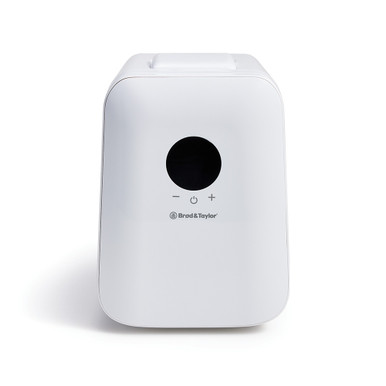
 shop.kingarthurbaking.com
shop.kingarthurbaking.com

Sourdough Home
Artisanal bread is at your fingertips with Brod & Taylors temperature-controlled Sourdough Home. Get it at King Arthur!
Did someone say "waffle"?View attachment 97293
Good timing. I’ve been holding out getting a waffle iron because I didn’t want another kitchen gadget in our 800 sq ft house. But I’ve been building out and fishing our basement so I have a ton more storage. Coincidentally we went to a diner this morning and my kid had a killer waffle—bringing up this conversation again.
Do my question for you (and everyone here) do y’all have a recommendation for a waffle iron/press?


